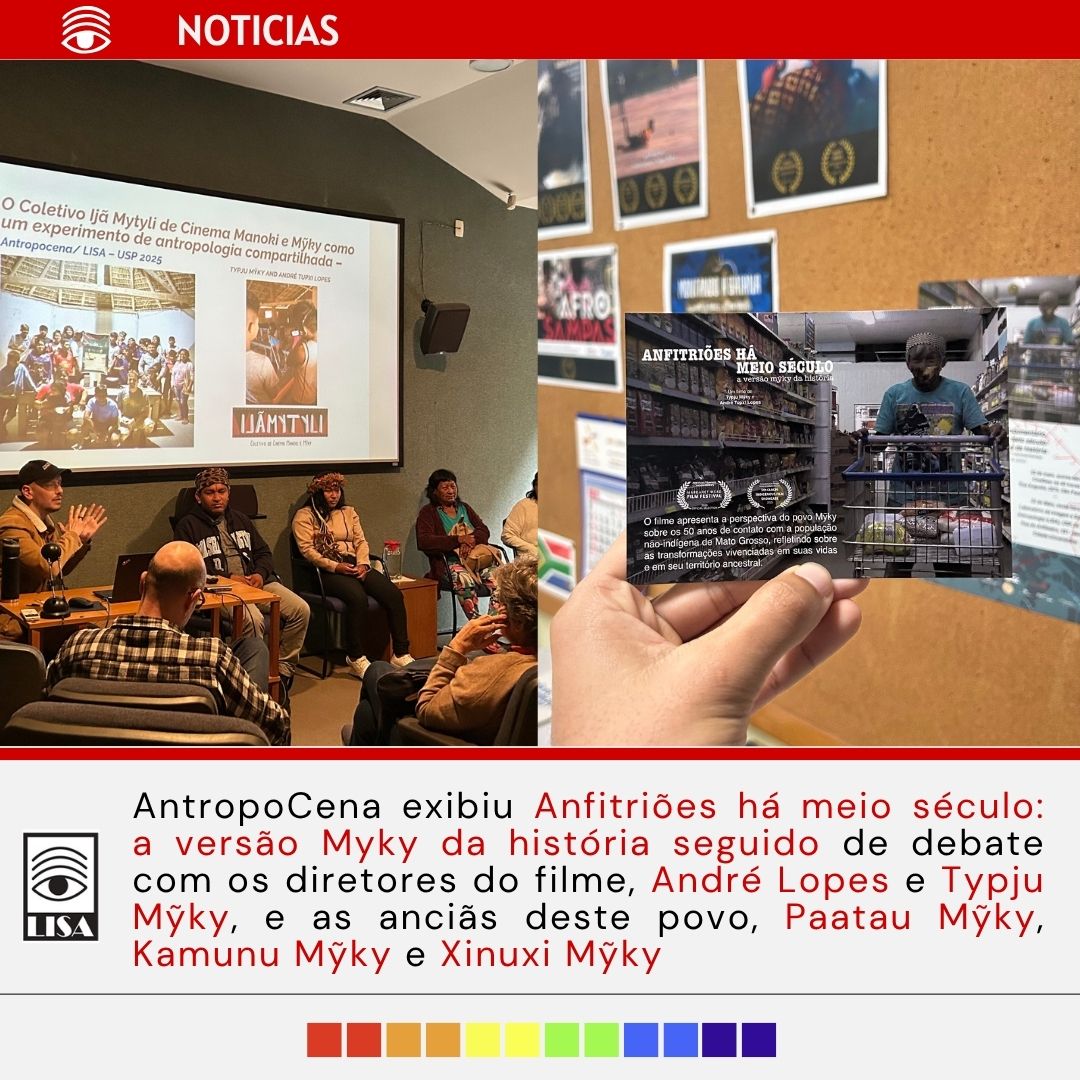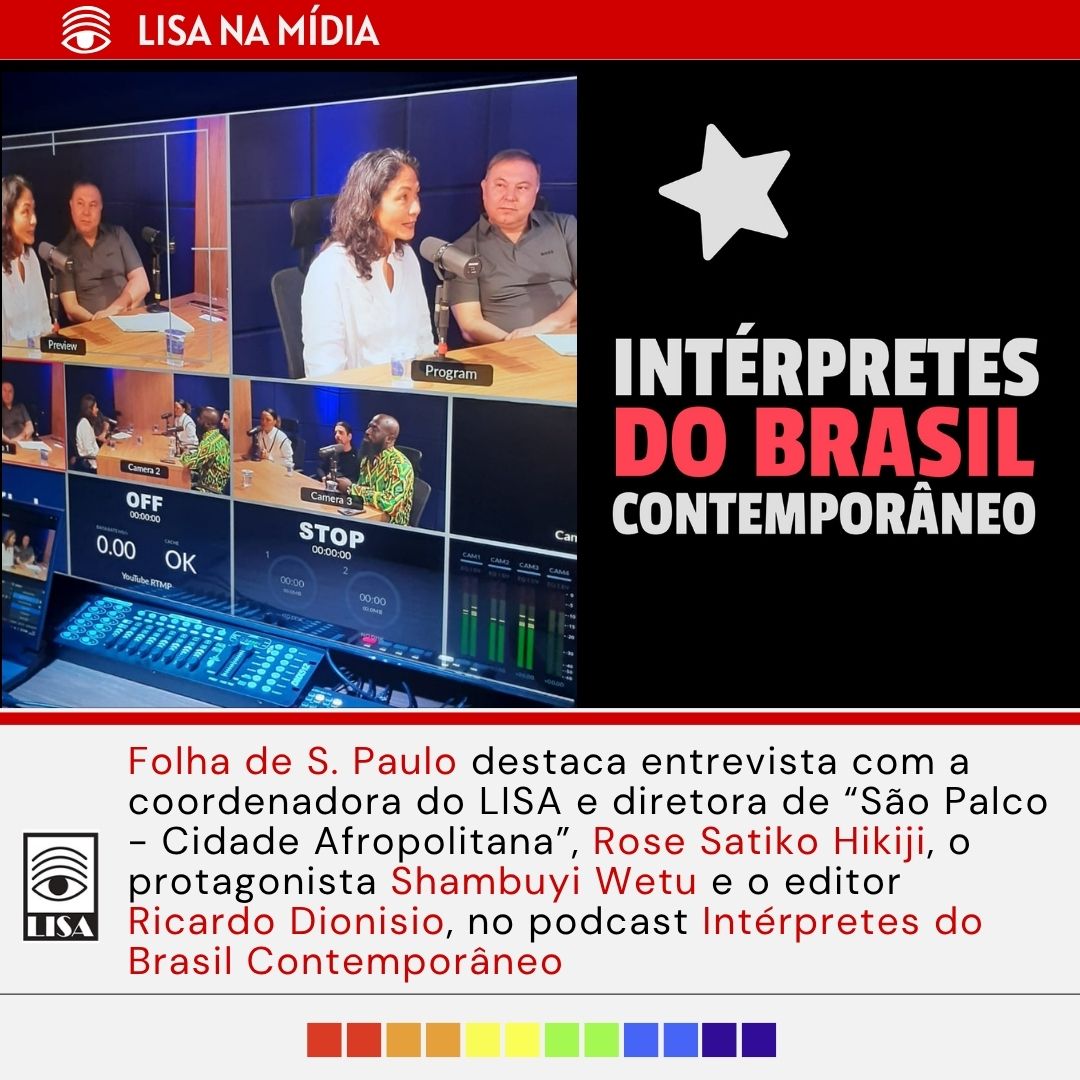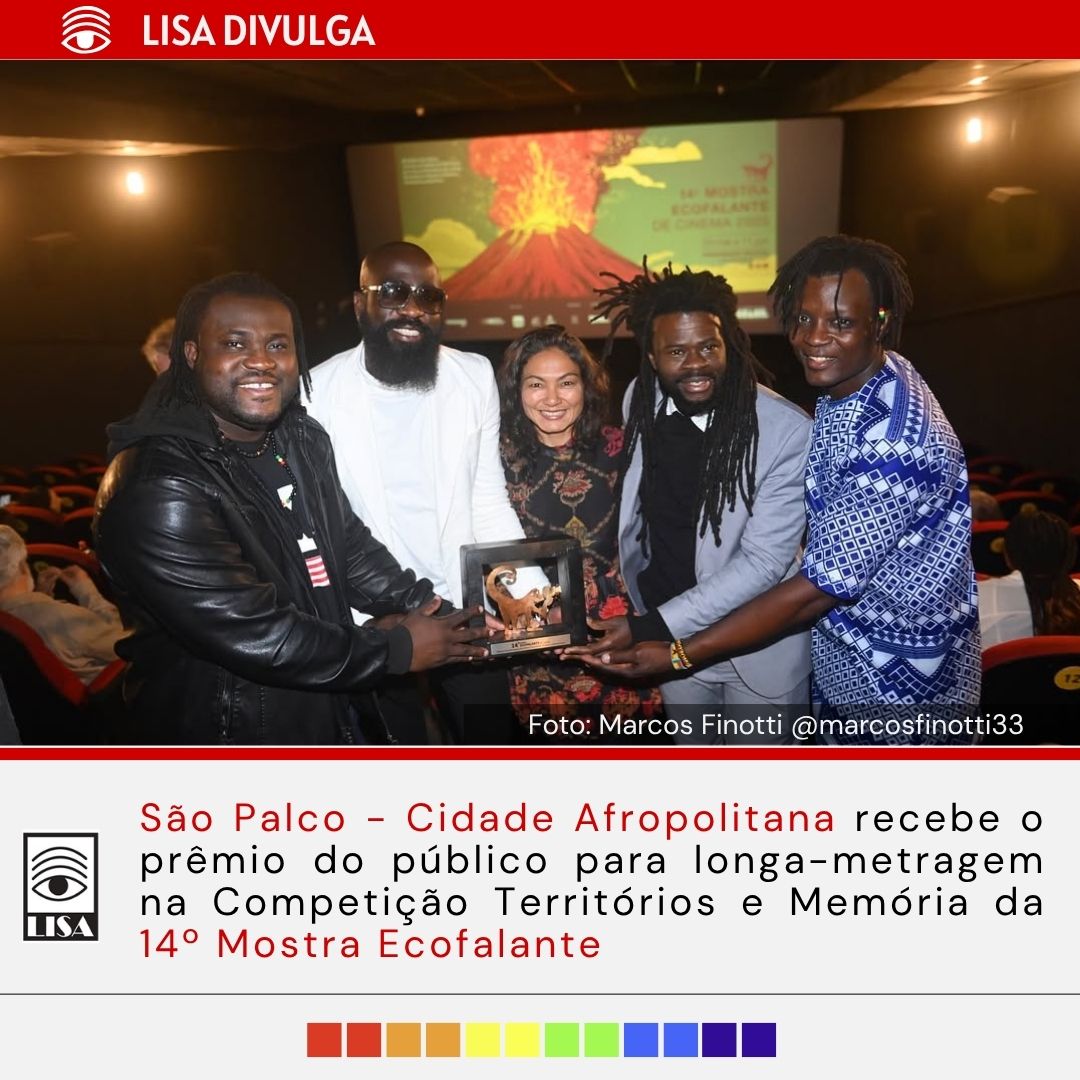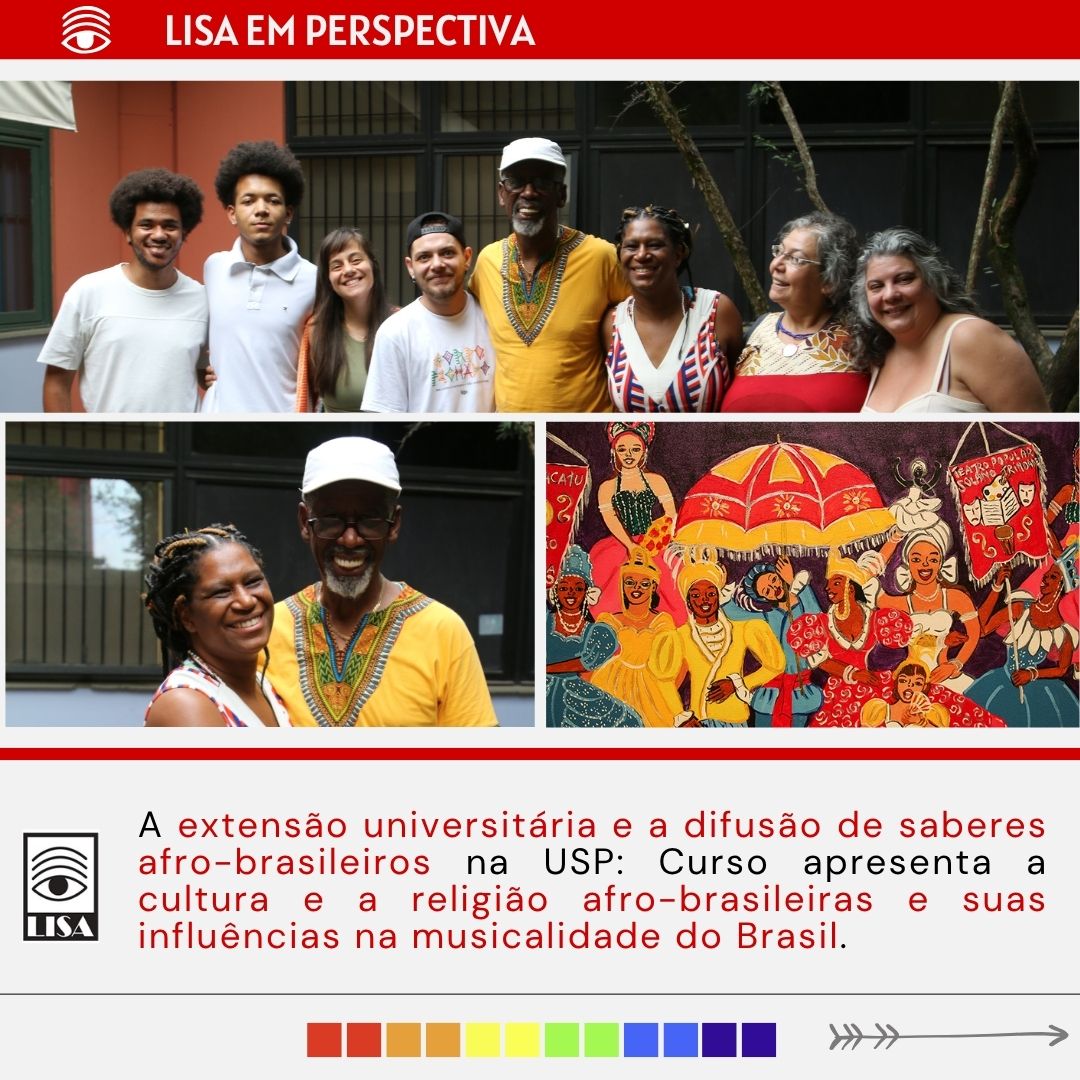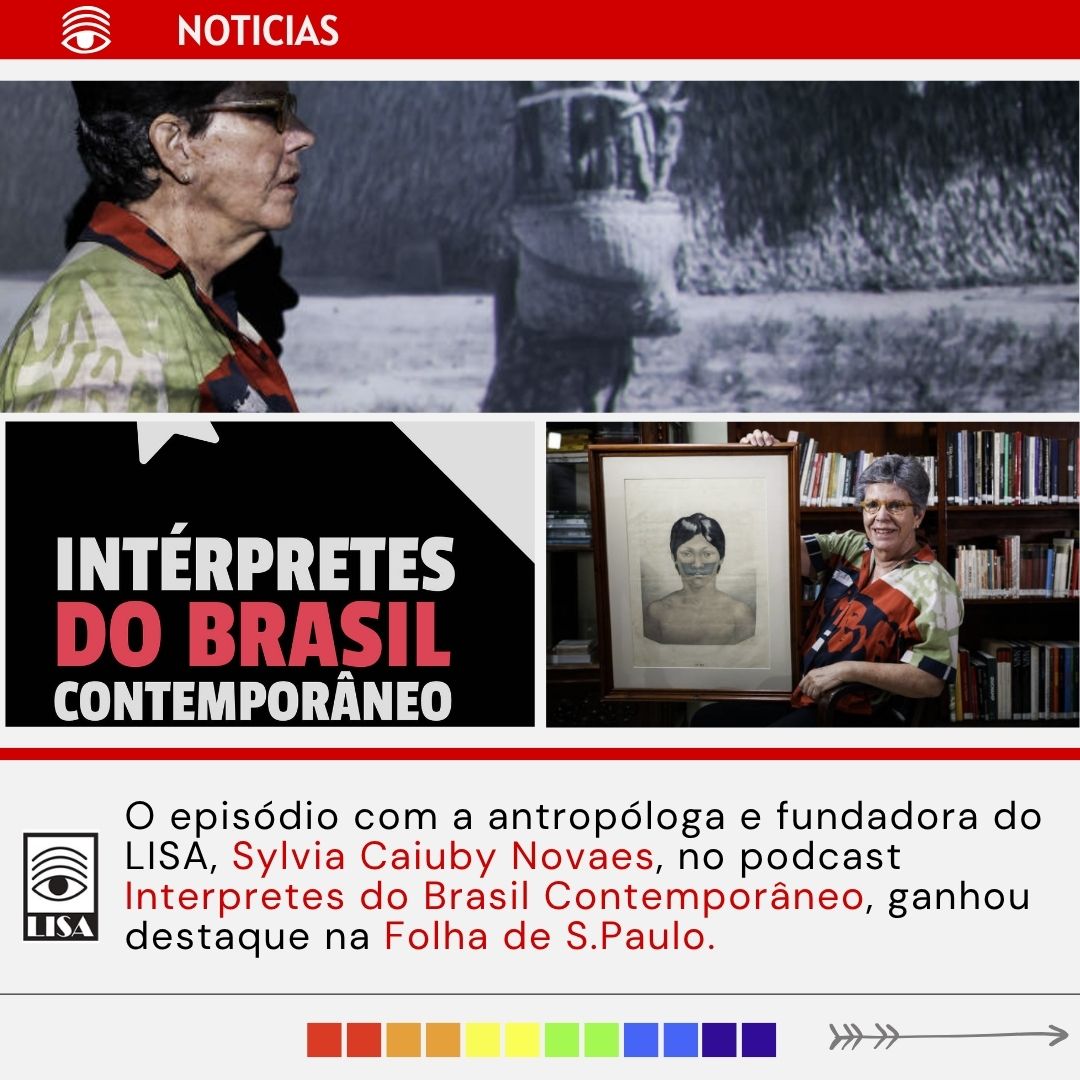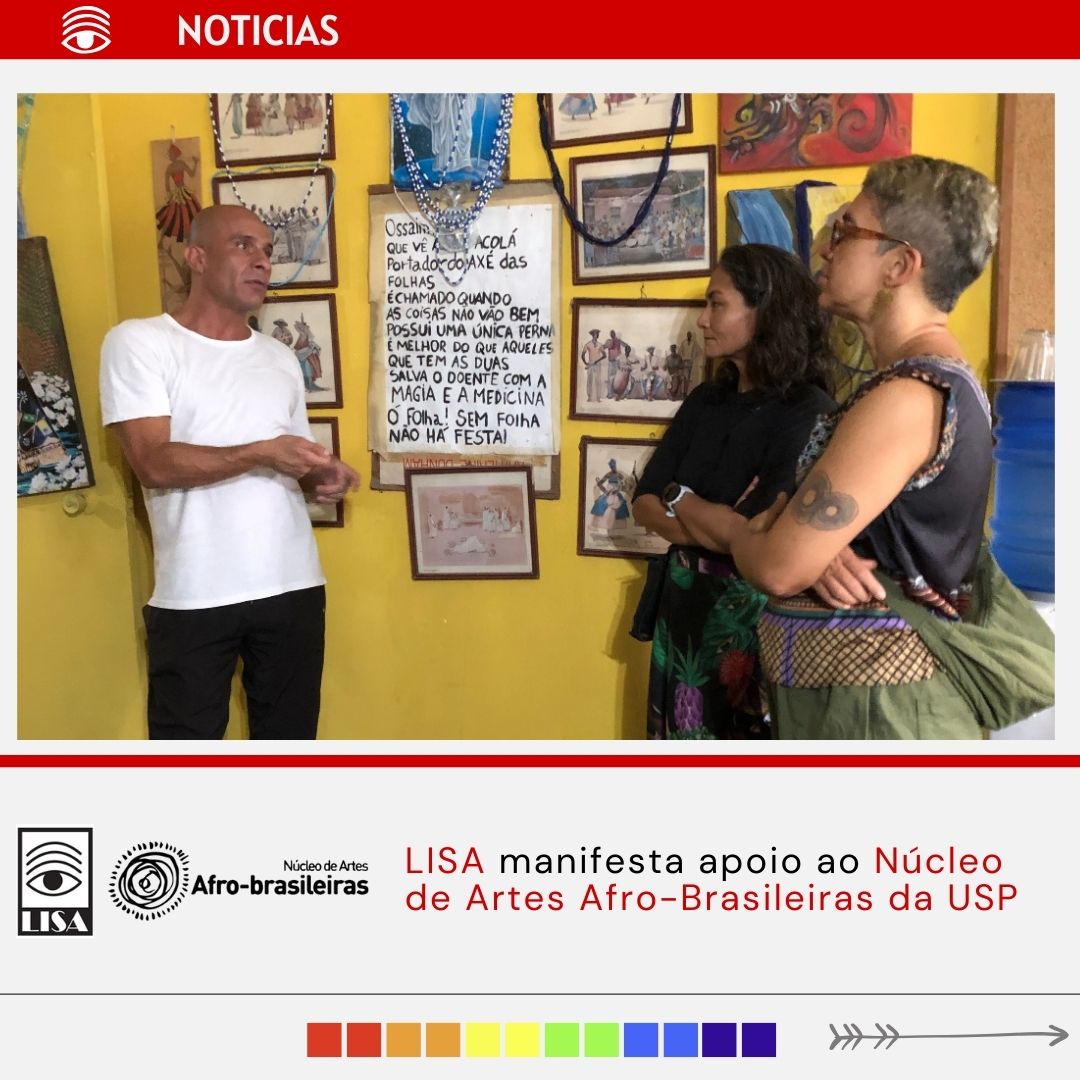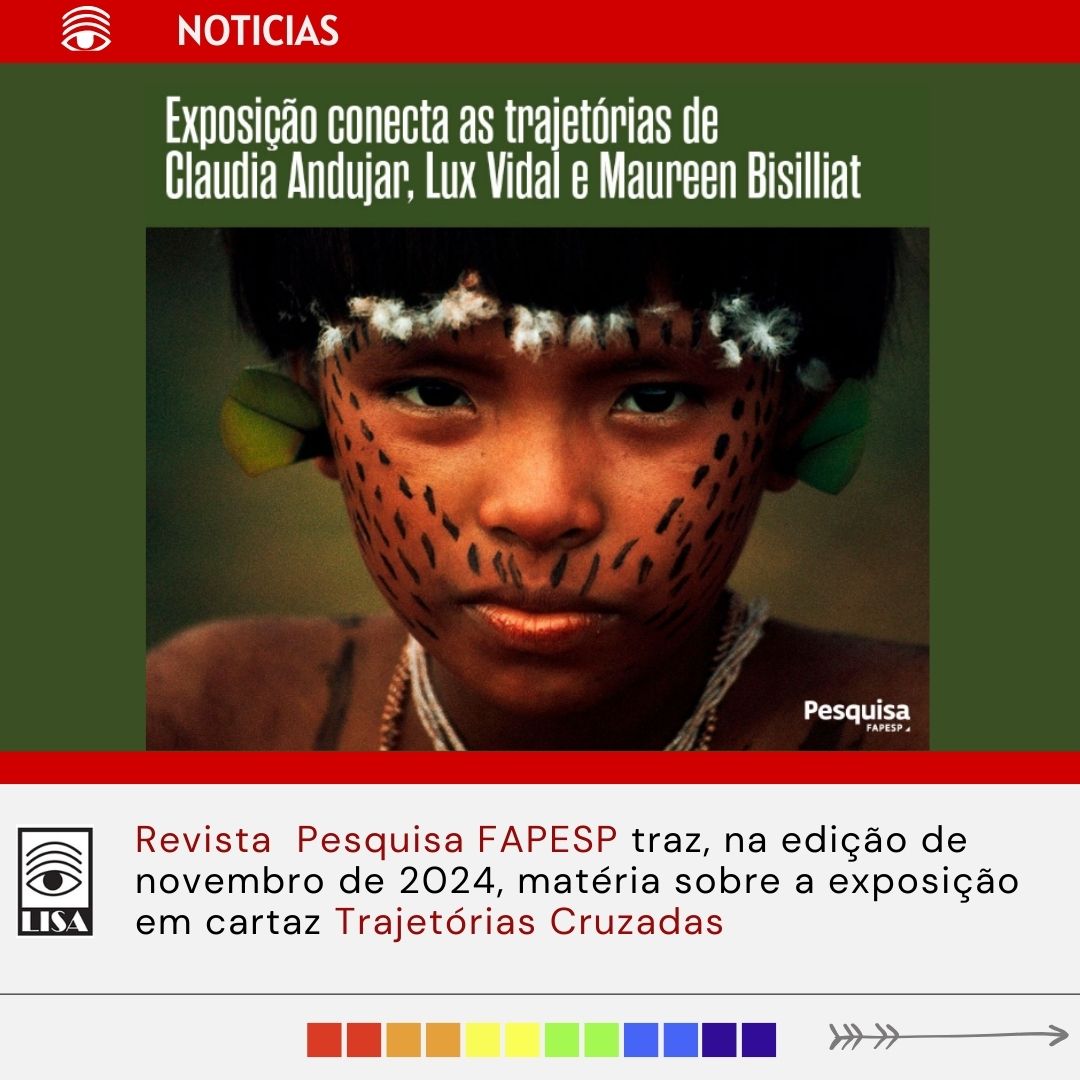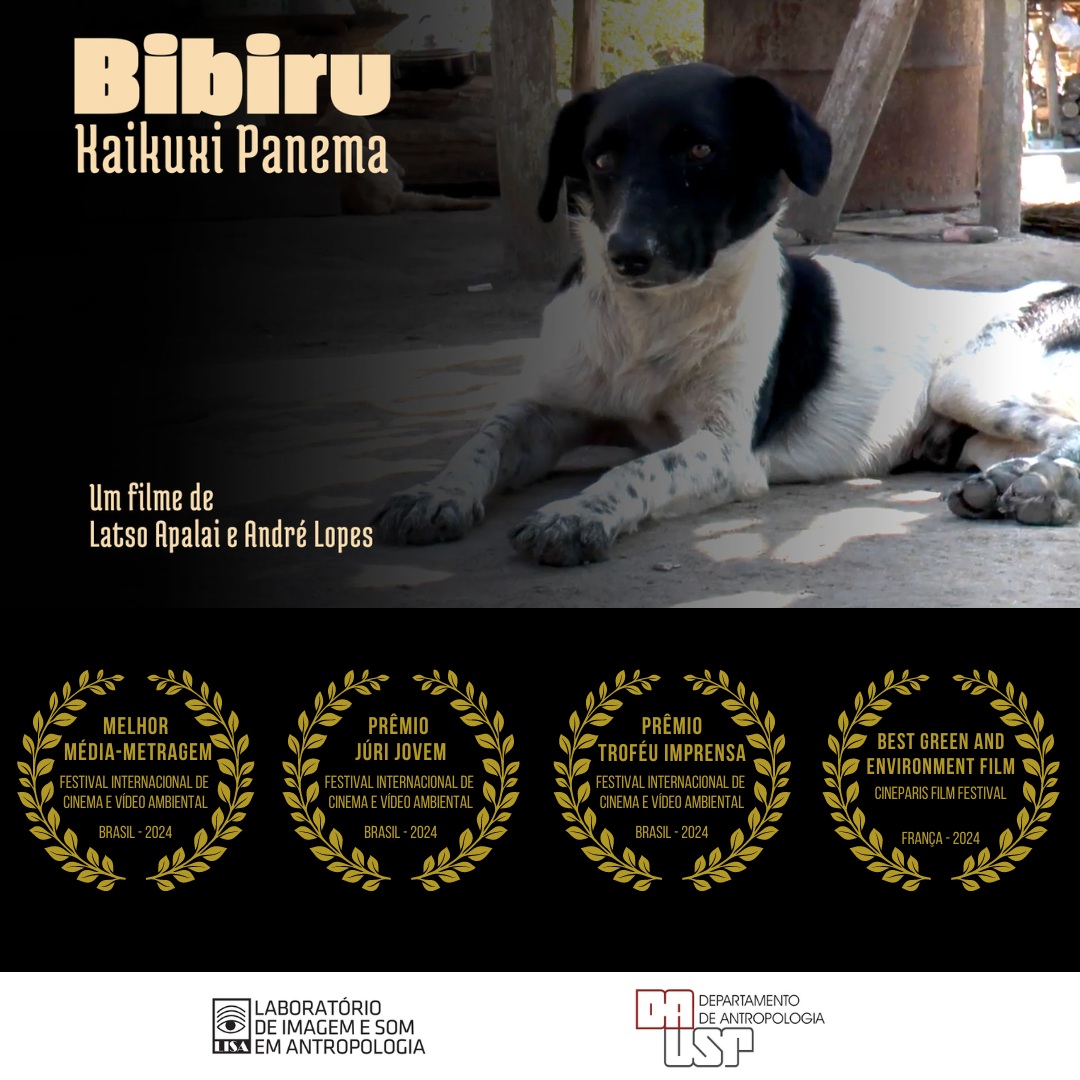News
Production in partnership with an indigenous film collective explains the transformations resulting from contact with the non-indigenous population
The session of the AntropoCena project on May 23, 2025, showed the film Hosts Half a Century Ago: The Myky Version of History and featured the participation of the film's directors, André Lopes and Typju Mỹky, and the elders of this people, Paatau Mỹky, Kamunu Mỹky and Xinuxi Mỹky. The Laboratory of Image and Sound in Anthropology (LISA-USP) hosted the premiere of the medium-length film, a notable production by the Ijã Mytyli Manoki and Myky Film Collective in co-production with LISA itself.
André Lopes holds a PhD in Social Anthropology from the School of Philosophy, Literature and Human Sciences at the University of São Paulo (FFLCH-USP) and won the 2024 USP Outstanding Thesis Award in the Innovation category with his thesis “Ijã Mytyli: The Manoki and the Mỹky in their new audiovisual paths-stories”. The researcher…
The recording with the coordinator of LISA and director of “São Palco - Afropolitan City”, Rose Satiko Hikiji, the protagonist Shambuyi Wetu and the editor Ricardo Dionísio, on the podcast Interpreters of Contemporary Brazil was highlighted in Folha de S. Paulo.
The article highlights the power of ethnographic films in transmitting knowledge and discusses the work of African artists who arrive in Brazil "with their stories, knowledge and creative practices", face barriers and "create stages of resistance".
The podcast Interpreters of Contemporary Brazil is a production of the Faculty of Philosophy, Literature and Human Sciences (FFLCH) at USP. Coordinated by Júlio César Suzuki, a professor in the Geography department, the program is the result of an agreement between the Faculty and the newspaper Folha de S. Paulo.
Check out the full article in Folha: https://www1.folha.uol.com.br/ilustrissima/2025/06/pesquisadora-da-usp-…
Watch the full episode on…
"São Palco - Cidade Afropolitana" was recently awarded the best feature film (voted by the public) at the 14th Mostra Ecofalante de Cinema, the main event for socio-environmental audiovisual productions in South America. The award, highlighted by Jornal da USP, recognizes the relevance of the feature film, which portrays how African artists who arrived in São Paulo in the last decade face the challenges of living in a new country and what they express in their works.
Rose Satiko Hikiji, co-director of the film and coordinator of LISA, emphasizes that the award demonstrates that university audiovisual production is capable of going beyond the walls of the University and reaching a wide audience, which recognizes the merit of the film.
The African creative diaspora in São Paulo was also the focus of the podcast "Interpreters of Contemporary Brazil" recorded on May 14, 2025. The episode "Afropolitan Art: Anthropological Readings" brings together anthropologist Rose…
"São Palco - Afropolitan City" received the audience award for feature film in the Territories and Memory Competition of the 14th Mostra Ecofalante, the most important South American event for audiovisual production linked to socio-environmental issues. The award ceremony took place on the evening of June 8, 2025, at Reserva Cultural in São Paulo
The trophy presented by Hermano Penna, the filmmaker honored at the 14th Mostra, was circulated among the protagonists present at the event: Shambuyi Wetu, Sassou Espoir, Edoh Fihon, Yannick Delass and Rose Satiko Hikiji, co-director of the film and professor at the Department of Anthropology at USP. Afro-diasporic art gains another stage, this time in the cinema.
Produced by the Laboratory of Image and Sound in Anthropology (LISA-USP), the film questions and reflects on what African artists who have arrived in Brazil in recent years carry with them on their journey? How do the African diasporas – the new creative…
How can the university approach Afro-Brazilian knowledge? How can we understand and spread the influence of Afro-Brazilian cultural practices in areas such as music, dance, and theater? Cultural and extension activities are one of the three pillars of university life. Alongside research and teaching, extension activities are fundamental for dialogue between academia and society. Through teaching programs, outreach, and other related activities, the university can maintain and strengthen its connection with various social segments, with predominantly interdisciplinary activities that can take place outside classrooms and laboratories.
Afro-Brazilian thought is the theme of the culture and extension course The Path of the Alabê – Rhythms of the Orixás and Brazilian Music, which has been promoted annually since 2023 by the Image and Sound Anthropology Laboratory (LISA-USP).
…The recording with anthropologist Sylvia Caiuby Novaes, on the podcast Intérpretes do Brasil Contemporâneo, was featured in Folha de S.Paulo!
In the article, Sylvia is recognized for her sensitivity and depth when talking about the role of the gaze in understanding images, a central theme of the conversation in the podcast.
With a career marked by listening, attention and visual criticism, Sylvia invites the public to reflect on how we see the world — especially in times of excess images and superficial readings.
🗞️ Check out the repercussion in Folha:
https://www1.folha.uol.com.br/ilustrissima/2025/05/antropologa-da-usp-destaca-sensibilidade-do-olhar-para-compreensao-de-imagens.shtml
🎧 Watch the full episode on Youtube:
https://www.youtube.com/watch?v=t3vIMs__Plg
The Laboratory of Image and Sound in Anthropology - LISA - held the workshop “Photographing and Seeing” from February 4 to 7, 2025. It was taught by researchers from the Visual Anthropology Group of the University of São Paulo (GRAVI-USP): Kelwin Marques, master's student in Social Anthropology at USP; Laila Kontic, master's student in Social Anthropology at USP; Kelly Koide, postdoctoral student at the Department of Anthropology at USP.
The meetings, held in person, sought to present technical concepts about a camera and its manual operation, practical exercises, discussions about photography and visual anthropology, in addition to a visit to the exhibition “Trajetórias Cruzadas: Claudia Andujar, Lux Vidal and Maureen Bisilliat”, held at the MariaAntonia Center of the University of São Paulo. The workshop was part of a series of activities for the exhibition “Trajetórias Cruzadas”, promoted with resources from the São Paulo Cultural Action Program (ProAc) and the…
The Image and Sound Laboratory in Anthropology of the University of São Paulo (LISA-USP) recognizes the importance of the activities developed by the Center for Extension and Culture in Afro-Brazilian Arts of USP (NECAAB - Resolution DOE 10/31/2007), which has been promoting research, teaching, culture and extension activities at USP for 28 years and enriching university education through Afro-Brazilian cultural heritage. Its activities present an innovative curricular proposal for the university, which should be valued and enhanced through dialogue with the members of NECAAB and the university community as a whole. To this end, the continuity of its activities and its space is essential.
Given the imposition of a renovation of the headquarters of the Center for Afro-Brazilian Arts, located in Block 28, by the Polytechnic School of USP, for partial occupation of the warehouse by this institution, LISA-USP expresses its support for the Center for Afro-Brazilian Arts to have…
Exhibition connects the trajectories of Claudia Andujar, Lux Vidal and Maureen Bisilliat
Now in their nonagenarians, they settled in Brazil in the 1950s and produced a vast photographic collection on indigenous themes.
In 2015, anthropologist Sylvia Caiuby Novaes was leaving the cinema when a scene caught her attention. She saw photographers Claudia Andujar and Maureen Bisilliat and anthropologist Lux Vidal walking together down Augusta Street in São Paulo, arms intertwined. “This image inspired me to investigate the affinities between those three women,” recalls Caiuby Novaes, a professor in the Department of Anthropology at the University of São Paulo (USP).
The idea gave rise to the research project “Photographs and trajectories: Claudia Andujar, Lux Vidal and Maureen Bisilliat”, coordinated by Caiuby Novaes, with support from FAPESP, between 2019 and 2022, which resulted in a website and more recently in the exhibition Trajetórias cruzados, on…
The ethnographic film "Bibiru: Kaikuxi Panema" won four international awards in the first half of 2024. At the 25th International Environmental Film and Video Festival - FICA, the documentary won in the following categories: Acari Passos Award for Best Medium-Length, José Petrillo Press Trophy and Jesco Von Putkammer Award, from the Young Jury. The festival took place in the city of Goiás during the month of June and received more than a thousand entries of different film genres, which were connected to environmental themes. It was also elected in the Best Green and Environment Film category by the jury of the Cineparis Film Festival, which brought together artists and filmmakers in Paris in June focused on discovering new talents and works. In July, the film was nominated for the XV Pierre Verger Film Award, promoted by the Brazilian Anthropology Association, one of the main competitive festivals of works produced within the scope of anthropological research in Latin America.…


